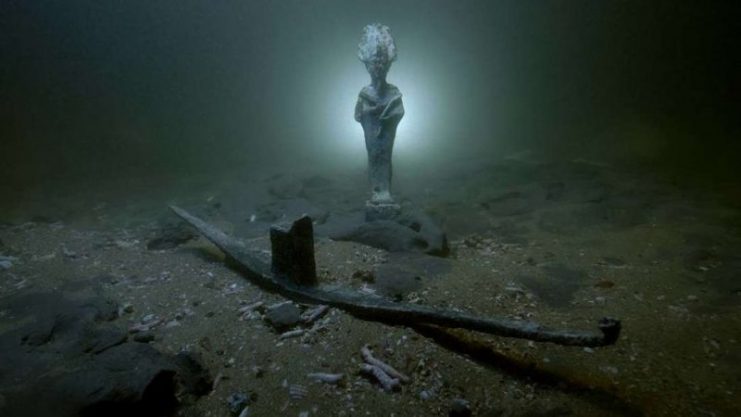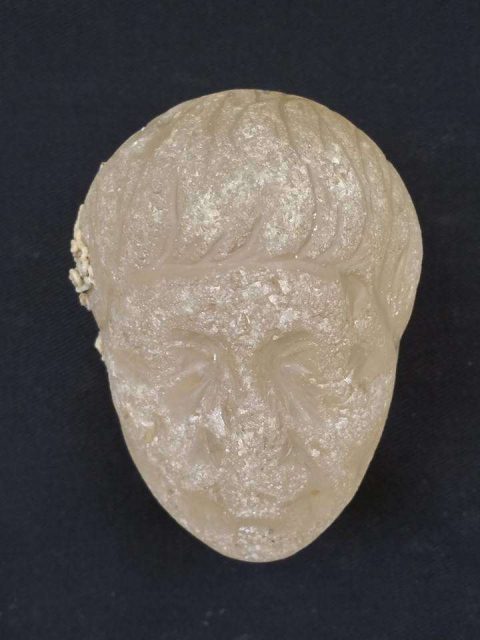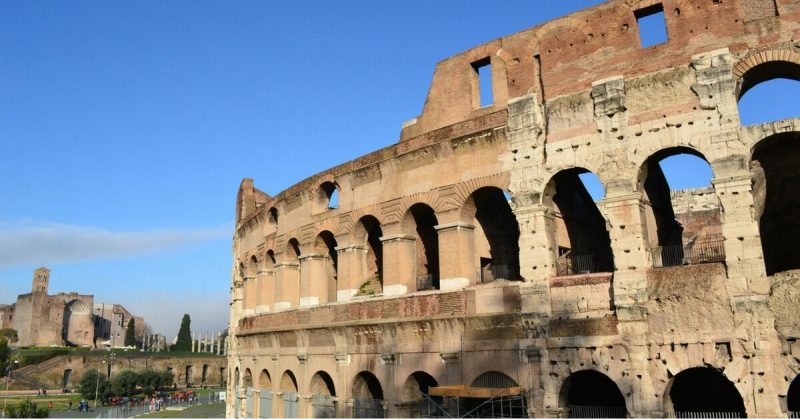Archeologists investigating the Bay of Aboukir on the northern coast of Egypt near the city of Alexandria, have made many exciting discoveries. This bay is known to have been the site of many settlements from the Roman as well as the pre-Hellenistic and Hellenistic eras. These settlements included the cities of Heraklion and Menouthis, both of which have been long lost below the waves.
An announcement made on the Facebook page of the Egyptian Ministry of Antiquities announced that the wrecks were being excavated by the Ministry of Antiquities’ Underwater Archaeology Department, in conjunction with the European Institute of Marine Archeology, and some significant finds had already come to light. Some of these relics include a beautiful crystal statuette that was unfortunately incomplete, and several coins.
The coins are dated to the time of the first Roman emperor. These gold coins helped with the dating of the shipwrecks as they were positively identified as coming from the age of Emperor Augustus, who ruled Rome from 27 BC to 14 AD. Augustus followed his great-uncle, Julius Caesar, into power following Caesar’s assassination. Augustus was responsible for a long period of peace and stability in Rome during his 40-year reign.
Researchers believe that the crystal statuette depicts the Roman General Marcus Antonius, better known to us as Marc Anthony. Mark Anthony was immortalized by William Shakespeare in his play Anthony and Cleopatra. The legend goes that Mark Anthony was passionately in love with Cleopatra, the Egyptian Queen, and when he mistakenly thought that she was dead, he committed suicide by stabbing himself.
Alongside these Roman-era relics, the archeological team found a bark artifact that depicted the Egyptian god Osiris. In ancient Egypt, Osiris was the god of the underworld, death, transition, and resurrection. The expedition members also uncovered large beams and planks from the vessels as well as pottery relics, that would have constituted the cargo of the ships.

The research team is convinced that there are more ships to be found in the bay and their search will continue in 2018. According to Egyptian news site Al-Ahram, Osama Al-Nahas, head of the Underwater Archaeology Department at the ministry, said that Alexandria’s eastern harbor is likely to contain many archaeological treasures.
In the year 2000, a French marine archaeologist, Franck Goddio, discovered the lost cities of Heraklion and Menouthis which are believed to have sunk beneath the waves over 1,000 years ago. They sank when cataclysmic natural disasters including earthquakes and tidal waves overtook them. Investigations at the site indicate that it is possible that liquefaction of the soil contributed significantly to the demise of the cities. This phenomenon is prevalent in areas where high water content is associated with soft or clay soils and with the added pressure from buildings, high water or a tidal wave can quickly turn the soil to liquid which would cause the buildings to sink.
These cities, whose memory was kept alive through writing by Herodotus, would have been centers of luxury and would have contained temples to gods such as Osiris, Anubis, Isis, and Serapis. An oil lamp thought to have been used during ceremonies to honor Osiris was found along with evidence of animal sacrifice in a temple dedicated to the god.

Not only were there recognizable artifacts found but many unique items have also been recovered. These items include ceremonial barges, a very realistic black granite bust of a priest’s head and a ceramic pot decorated with grotesque grimaces, dedicated to the god Bes, who protected against evil forces.
From the start of the excavation on these sites, wonderous treasures have been found and brought to the surface. These treasures include huge statues, jewelry, and coins. As the beauty and importance of these cities has come to light, it is no wonder that archeologists have now found ships carrying Roman coins that would have been sailing toward these cities.
